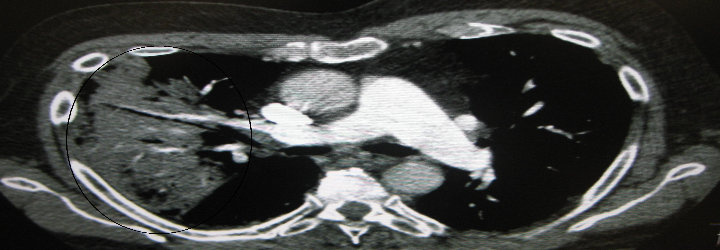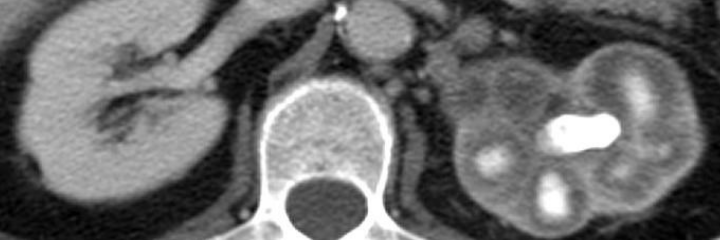Pneumonia is one of those medical conditions that is constantly thrown around without being rigorously defined—and as we all know by now, rigor is absolutely paramount in my view of academic medicine and medical etymology. Let’s start by looking at the word from an etymological standpoint:
Pneumonia
Origin: Greek, pneumon (lung) + –ia (condition of)
Condition of the lung
Well, that certainly wasn’t very helpful—at least not at first glance. There can be many conditions of the lung that are called “pneumonia” and the classic case of a lung infection is merely one of them. Compare pneumonia to pneumonitis:
Pneumonitis
Origin: Greek, pneumon (lung) + -itis (inflammation of)
Inflammation of the lung
There are many inflammatory conditions of the lung, but only a few of them are called “pneumonitis” because pneumonitis is considered to be inflammation of the lung tissue itself (the lung parenchyma). There are some who then consider pneumonia to be inflammation of the air sacs in the lungs (the alveoli). This makes sense for the most part; the bacteria, viruses, fungi, and parasites that can cause pneumonia would cause alveolar inflammation.
To put things in perspective, when somebody is admitted to the hospital for pneumonia, the classic picture is someone who acquires a bug, and said bug colonizes the alveolar space. The resulting “mass” that forms (usually in one lobe of the lung) is called a consolidation:
Consolidation
Origin: Latin, con- (with) + solidus (solid)
With solid, i.e., things that aggregate to form a “solid”
For these “classic” pneumonias, we can call them community-acquired pneumonia (CAP), hospital-acquired pneumonia (HAP), and the like. Some bugs associated with the former are things like Streptococcus pneumonia and Pseudomonas aeruginosa, and some bugs associated with the latter are things like Staphylococcus aureus and Haemophilus influenzae. (Stay posted for microbiological etymology!)
But it turns out that this isn’t the whole picture. Pneumonia is indeed as general as its etymology suggests, for there can be inflammatory and fibrotic conditions of the lung—and both classes can fall under the term “pneumonia.” (Generally, inflammation is caused by the infiltration of white blood cells and fibrosis is caused by the production of excess connective tissue, e.g., collagen.) Thus, as a counterexample to the definition that pneumonia is simply the inflammation of the alveoli, we have something called usual interstitial pneumonia (UIP). It is a form of interstitial lung disease in which the tissue between the alveoli is fibrosed with collagen.
 The classic “honeycomb lung” appearance of UIP on CT scan
The classic “honeycomb lung” appearance of UIP on CT scan
To end this post, I posit my generalized definition of pneumonia: pneumonia is a principally inflammatory or fibrotic condition of the lung. By formalizing this definition of pneumonia, I am faithful to the etymology and make pneumonitis a subset of pneumonia. Note that I use the word “principally” in front of inflammatory—the reason why is that cancers of the lung can cause inflammation, but cancers are not considered to be pneumonias by any definition or practice.
In another post I will discuss the classic methods of diagnosing “normal” (generally bacterial) pneumonia and the etymologies of these techniques. Here is a small teaser: one of the terms involves the Greek word for goat! Can you guess which one? Leave a comment below.






